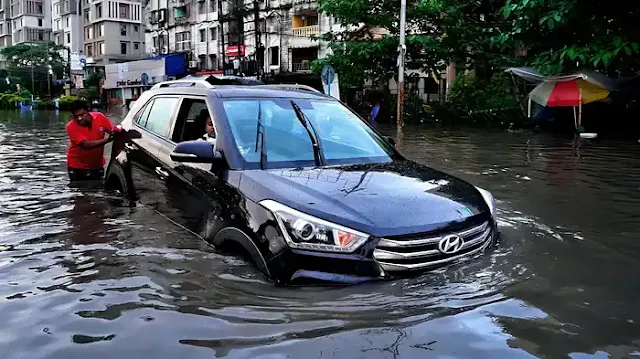IMD Advances Weather Forecasting: AI Tackles India's Climate Challenges
HIGHLIGHTS:
1. India's meteorological agency, IMD, enhances weather predictions using AI, improving precision amid increasing floods and droughts.
2. IMD employs AI to issue alerts on heatwaves and diseases, demonstrating technology's role in safeguarding communities.
3. The Indian government supports AI integration into traditional models, aiming to revolutionize weather forecasts for a resilient future.
In response to the escalating challenges posed by climate change in India, the India Meteorological Department (IMD) is pioneering the integration of artificial intelligence (AI) into weather forecasting.
The nation, experiencing more frequent and severe floods, droughts, and torrential rains, has witnessed a surge in extreme weather events, claiming thousands of lives annually.
Acknowledging the pressing need for more accurate predictions, the IMD is exploring the potential of AI in constructing advanced climate models.
1. The Imperative Shift Towards AI in Weather Forecasting:
As global warming intensifies weather system clashes, the IMD recognizes the critical role of AI in augmenting the accuracy and efficiency of weather forecasts.With a focus on cost reduction and enhanced speed, weather agencies worldwide, including Britain's Met Office, are embracing AI as a transformative tool in revolutionizing weather prediction.
Recent strides, such as the success of a Google-funded AI model surpassing conventional methods, underscore the potential impact of this technological shift.
2. Challenges and Opportunities in India's Weather Landscape:
India, with its vast population and significant agricultural output, faces unique challenges exacerbated by climate change.The IMD, traditionally relying on mathematical models and supercomputers for forecasts, now envisions leveraging AI to build climate models and advisories.
The adoption of AI, when combined with an expanded observation network, promises the generation of high-quality forecast data at a reduced cost, addressing the specific needs of a country with diverse weather patterns.
3. AI's Role Beyond Forecasting:
Beyond traditional forecasting, the IMD has already employed AI to issue public alerts for heatwaves and diseases like malaria. Plans are underway to expand the weather observatory network, enabling data collection down to the village level.This expansion holds the potential to provide higher-resolution data, contributing to more accurate and localized weather predictions.
Saurabh Rathore, an assistant professor at the Indian Institute of Technology-Delhi, emphasizes the cost-effectiveness of AI models, citing their ability to operate on standard desktops, eliminating the need for expensive supercomputers.
4. Government Initiatives and AI Integration:
In a significant move, the Indian government has expressed its commitment to incorporating AI into traditional weather models.Establishing a dedicated center for testing this integration through workshops and conferences, the government aims to harness the potential of AI in generating weather and climate forecasts.
The initiative aligns with the global trend of embracing AI to enhance the precision of meteorological predictions.
5. Addressing Challenges:
Experts highlight the necessity of high-resolution data for the effective implementation of AI in weather forecasting.Parthasarathi Mukhopadhyay, a climate scientist at the Indian Institute of Tropical Meteorology, emphasizes the need for detailed data in space and time to enable AI models to magnify existing forecasts for specific locations.
This underlines the importance of simultaneously improving data collection infrastructure to maximize the benefits of AI integration.
6. The Human Element in AI Integration:
Despite the promising prospects of AI in weather forecasting, it is crucial to maintain a human touch.The expertise of meteorologists remains integral to interpreting AI-generated data and ensuring its reliability.
Striking a balance between technological advancement and human expertise is imperative to build a robust and trustworthy weather forecasting system.
Verdict:
As the India Meteorological Department ventures into the realm of AI for weather forecasting, the potential for transformative change in the accuracy and accessibility of predictions becomes evident.In a country grappling with the impacts of climate change, from agricultural challenges to extreme weather events, the integration of AI holds promise in offering timely and precise information.
The government's commitment to this technological shift and the IMD's proactive approach in employing AI for public alerts signify a step towards a more resilient and responsive meteorological system.
While the advantages of AI are evident, it is crucial to approach this integration with a balanced perspective, acknowledging the role of human expertise in interpreting and validating AI-generated data.
While the advantages of AI are evident, it is crucial to approach this integration with a balanced perspective, acknowledging the role of human expertise in interpreting and validating AI-generated data.
The collaborative efforts of meteorologists, technologists, and policymakers are essential to harnessing the full potential of AI in weather forecasting.
As India navigates the complexities of its diverse weather patterns, the fusion of AI and traditional meteorological methods may well be the key to a more adaptive and efficient forecasting system, ultimately safeguarding lives and livelihoods in the face of a changing climate.
